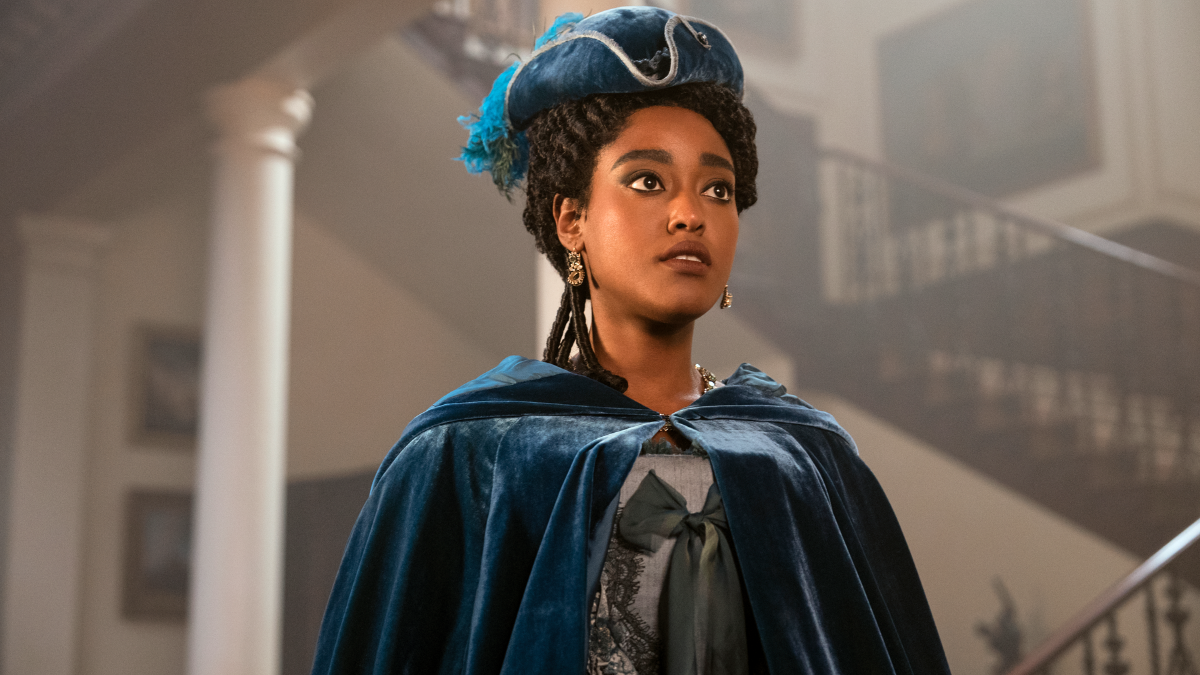Warning: This article contains spoilers for Queen Charlotte: A Bridgerton Story.
It’s a good year for the Bridgerton fans. Along with an assurance of a season three this year, Shondaland chose to divert its attention to an untold story, something which the viewers have always wondered about, but never really pondered over.
It is the story of Queen Charlotte, a character whose existence up until the show’s second installment was meant for adding to its comedic effect. While Bridgerton portrayed her as a bored, grumpy, cocaine-addicted royal, the new spinoff showcases her life’s sad events from her perspective, adding a new flavor to the fictional historical world never seen before.
Despite being the titular character, Queen Charlotte: A Bridgerton Story is more than just a history of the queen’s tragic life as it further delves into the nuances of race, gender equality, and sexual freedom of the era’s women.
And one of them is none other than the well-known and the most loved Lady Danbury, who until now was known for her exemplary matchmaking skills, as well as her strong-headed matriarch personality.
The series focuses on her backstory, and for the first time, we get to meet her husband, Lord Herman Danbury, who is the first Black nobleman to have been granted the title of Lord as a part of the Great Experiment.
Throughout the show’s run, we discover a toxic relationship between them even to the degree of her having breathed a sigh of relief after his unexpected death. Not to mention, the circumstances of his demise have many wondering if Lady Danbury is behind the act — which raises the question:
What happened to Lord Danbury?
Arsema Thomas plays the younger Lady Agatha Danbury, and one doesn’t have to proceed beyond the first episode to discover how awful her marital life is. Mainly because of the constant sexual exploitation she is forced to undergo by her husband, who views her as nothing more than a sex object.
It was occasionally mentioned that they have four children who barely made any appearance on screen and the only person besides them in their household is Agatha’s maid and confidante, Coral, with whom she converses and shares her experiences after every forceful act of sexual intercourse.
The viewers never got a glimpse of any tenderness between them, except the occasional sympathies and affections we see Agatha bestowing on her husband after he suffered discrimination and exclusion (despite his status as a Noble) at the hands of his white counterparts.
Notwithstanding his lower status in the social hierarchy, he subjects his wife to a tremendous form of oppression and subservience, even refusing to acknowledge her contribution in stabilizing their equal status in society.
In fact, after throwing a ball in the third episode, “Even Days,” a fête which secured his stability and public recognition as the first Black nobleman, Herman relegates Agatha to another round of brutal sexual episodes (or her “marital duty,” as he likes to call it) only for him to drop dead in the middle of the act.
It is not until she goes out and happily utters the words “We’re done” that we finally get a grasp of the marital nightmare that marked Agatha Danbury’s formative years. Which demands us to address the elephant in the room: Did Lady Danbury kill her husband?
The answer is no.
Throughout, we do not come across any evidence that points at it, but we know for sure that she absolutely and wholeheartedly loathed him for years, and the bitter memories continued down to her old age as she confessed to Violet that the inspiration for her to run an orphanage was borne out of her husband’s hatred for orphans.
Then, how did Lord Danbury die? The reason isn’t revealed, but it can be speculated that his old age or some unknown ailment might have been responsible.
One thing’s for sure. Lady Danbury’s plight reflects the boundary between racial and gender oppression. The recognition and steps in eradicating the persistent racial inequalities did not apply to gender differences. Even though, the series addressed the struggles that the Danburys underwent in securing their position in a highly racist social setup, the sanctity of gender hierarchy was maintained by members of both races.
This is evident from Lady Danbury’s confessions of her betrothal at the tender age of four, and her upbringing, which was designed to suit her husband’s desires and wishes. Besides a tough life of living under the rule of a man, Lady Agatha Danbury eventually emerged victorious and a symbol of female liberation and independence.
Queen Charlotte: A Bridgerton Story is available to stream on Netflix.
